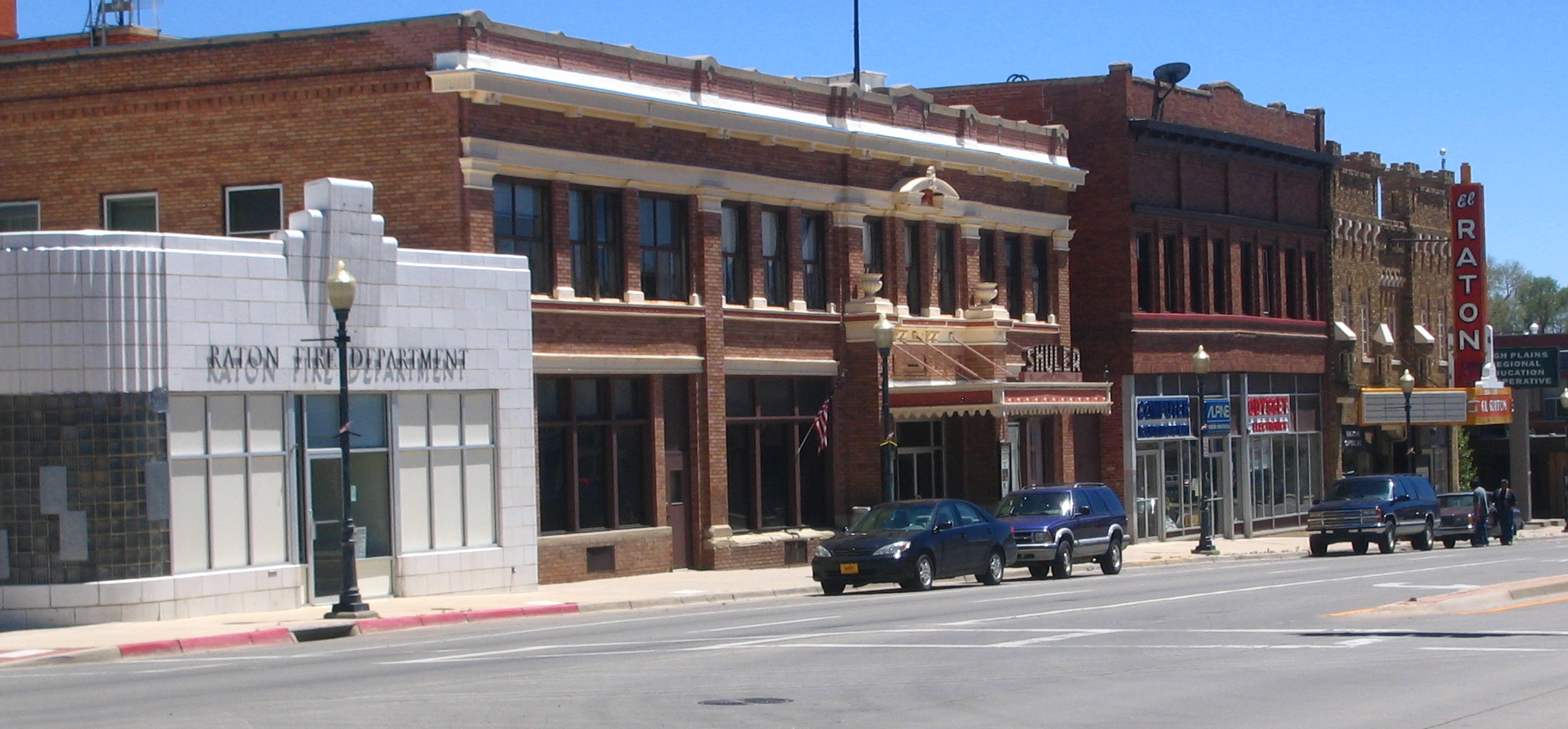Historic Districts
Style: Victorian-Italianate
Raton Downtown Historic District
Northeast Region
Constructed 1930
Developed in the late nineteenth and early twentieth centuries, the Raton Downtown Historic District contains fine examples of the Romanesque Revival, Italianate, and Queen Anne styles, as well as the later Decorative Brick Commercial and Mission and Spanish Colonial Revival styles of the 1920s, 30s, and 40s. The majority of commercial buildings in the district were built between 1880 and the mid-1960s.Located at an elevation of 6,660 feet, Raton was built at the base of a major landform known as Goat Hill, which continues to serve as a landmark for the community with its neon �Raton� sign, which dates to the early 1930s. The town site was developed on a grid system with tree-lined streets that climb to the west, rising 100 feet in elevation. The rolling topography of the residential district to the west, listed in the National Register as the Original Townsite Historic District in 2007, counters the rigidity of the gridded commercial district. Located at the foot of the Raton Pass, the town grew alongside the Atchison, Topeka, and Santa Fe Railroad. Bartlett Mesa frames the town on the north. Prior to 1911, the major north � south streets in town were named for the AT & SF, a fitting practice since the railroad laid out the town. Today, the commercial district roughly includes First Street (formerly Railroad Avenue), Second Street (formerly Santa Fe Avenue), and the east side of Third Street (formerly Topeka Avenue), which run parallel to the railroad tracks, between Apache and Parsons avenues
First Street, Second Street and Third Street | Raton, NM
open
mon: 24/7 | tue: 24/7 | wed: 24/7 | thu: 24/7 | fri: 24/7 | sat: 24/7 | sun: 24/7























